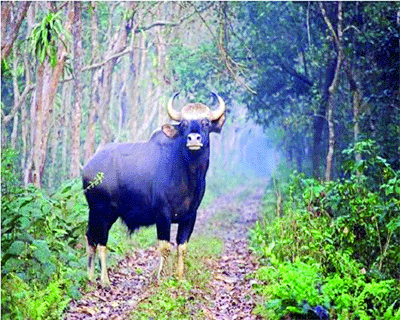The Ministry of Environment & Forests (MoEF) on Wednesday issued a draft notification inviting suggestions for declaring as eco-sensitive zones the areas around three wildlife sanctuaries in Sikkim. The move comes in the wake of the ongoing process of forest clearances for large hydro-electric power projects expected to come up in North-Eastern States, including Sikkim.
The notification on eco-sensitive zones relates to areas surrounding the Maenam Wildlife Sanctuary, Kitam Bird Sanctuary and Barsey Rhododendron Sanctuary as eco-sensitive zones. Development activities, including mining, quarrying or setting up new ‘major’ hydro-electric projects, will not be allowed in these areas.
Maenam Wildlife Sanctuary, spreading over an area of 35.34 sq km, is home to wildlife, besides dwarf bamboo thickets, rhododendron forests, patches of chestnut and oak and still undiscovered epiphytes.
Barsey Rhododendron Sanctuary is a trans-boundary protected area bordering Nepal in the West District of Sikkim. The sanctuary, spread over an area of 104 sq km, is also rich in bio-diversity.
Kitam Bird Sanctuary in South Sikkim has unique association of Sal and Chir Pine forests which support a good population of peacocks. lt also has the common leopard, Assamese macaque, Rhesus Macaque, barking deer, wild boar, Himalayan Palm Civet and Indian rock python.
The purpose of eco-sensitive zone is to create areas that can act as shock absorbers around the identified stretch to protect environment and wildlife. The extent of eco-sensitive zone, under the notification, varies from 25 meters to 200 meters from the existing boundary of the national parks and sanctuaries, depending on the topography of the region and its proximity to international boundaries of Nepal and China.
MoEF has sought public opinion on this move within 60 days so that it can look into suggestions and complaints, if any, related to the extent of the eco-sensitive zone. The proposed ban under the order will come into force after the expiry of the 60-day deadline.


























